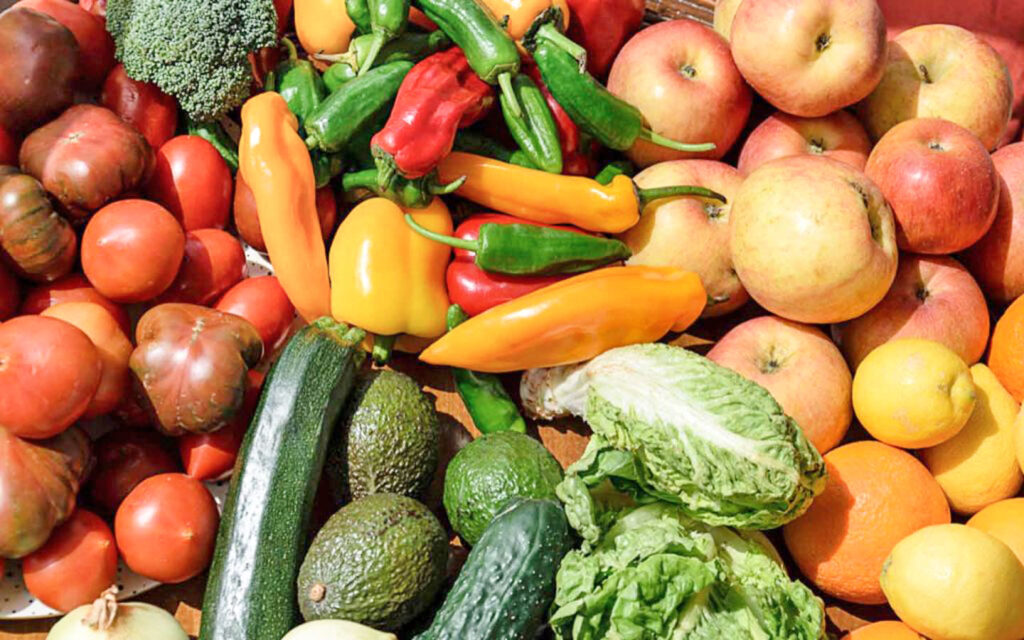
Tell me what you eat, and I will tell you what you are,” was the phrase coined in 1826 by French lawyer Anthelme Brillat-Savarin. His words hold good even today in an environment- conscious world where the food we consume is increasingly being seen as a significant factor contributing to carbon emissions.
In fact, it may come as a surprise to many that cultivation of the produce we consume and the agri-food systems that sustain its production, packaging and distribution all determine how environment-friendly a meal is when it is finally served. These factors did not merit as much attention a decade ago as they do today.
But the times have changed. Now expert opinion is agreed that an important aspect that supports a sustainable lifestyle comes from consciously reducing the carbon footprint of the food we consume. But before we can make any informed and environment-friendly choices, we have to know what creates this footprint in the first place.
The process a particular food has been through before it comes to the supermarket, or the grocery store, is an important contributory factor. Was the product frozen, packaged, processed, pre-cooked, or refrigerated using non-renewable energy? Was it transported long distances using fossil fuel or shipped by air? Did fertiliser and extensive water use go into its cultivation or was it produced through pesticide-free organic agriculture? All these factors determine a particular food’s share in the carbon pie.
Be it meats, legumes, grains, exotic vegetables, packaged sauces, chutneys and pickles or ready-to-eat dishes, preserved spreads, canned beans or tuna and bottled drinks — each comes with a history of its carbon footprint. Some contribute more and some less to the damage.
A few tips culled from research on the subject that will help you make better green choices:
Reduce convenience foods: Working couples often find ready-to-eat packaged food a convenient option on days when a heavy workload in the office leaves little time to cook a fresh meal. But before you yield to the temptation of taking a shortcut, remind yourself that you will not only be reneging on your commitment to be a green citizen but also compromising on your family health. It is widely accepted that packaged heat-and-eat products have reduced nutrients, excess oils, salt and preservatives which are unhealthy. It also leaves a larger carbon footprint than a freshly cooked meal.
But avoiding ready-to-eat food entirely may not always be possible. There will be days when you will be pressed for time to rustle up even a simple meal. In such a situation do opt for the best choice on the supermarket shelves and complement the packaged meal with green salad, fresh sprouts and home-made yogurt. The important thing to remember in this context is not to allow laziness to overcome you and make heat-and-eat into a habit.
Buy local: Though it is the age of ordering fruits and vegetables online, the better and greener option would be to shop for your daily requirements from the local vendor or the farmers’ market in your area. When you buy food grown or sold locally, it cuts down on the amount of fuel needed to ship the food to your market, and also provides the small producer a livelihood. If organic vegetables are available and can be afforded, that too is a great option.
Eat seasonally: It is now possible in India to buy strawberries in the middle of summer and mangoes in winter. But this weighs rather heavy on your carbon footprint. The so-called ‘fresh’ product may have in all probability been frozen for many months and has consumed large amounts of fossil energy before it reaches the malls. It could have also been sourced from some distant country; blueberry, apple and avocado aften are. A greener option would be eating fruits and vegetables that are seasonal and grown locally. It would not only have a lesser carbon footprint but may also be tastier, fresher and certainly cheaper.
Get the diet mix right: Research says that a diet where 80 per cent food is plant-based is good for both the environment and the body. These days nutritionists recommend healthier and traditional options like millets and brown rice instead of gluten-rich refined and processed grains. There are several exciting recipes on YouTube which you can experiment with when cooking millets, for instance. Needless to add, any healthy diet would mean limiting the use of sugar and opting for healthier and unrefined sweeteners like jaggery and honey.
Beverage choices: Here again, beverages travel for many miles, are full of sugar and land on your table to add calories and increase your carbon footprint. Water or fresh juices, that too carried around in your own water bottle would be a greener option.
Lastly, and most importantly, when you shop — from your neighbourhood kirana store or online, as many do, go for the less sweetened, less processed, organic choices. The more you can buy in bulk the better. You will, in a small way, be serving the green cause by using less packaging material.
We will be exploring the theme of green cooking next time. Till then, some food for thought.
The writer is a senior journalist who writes on environmental issues








